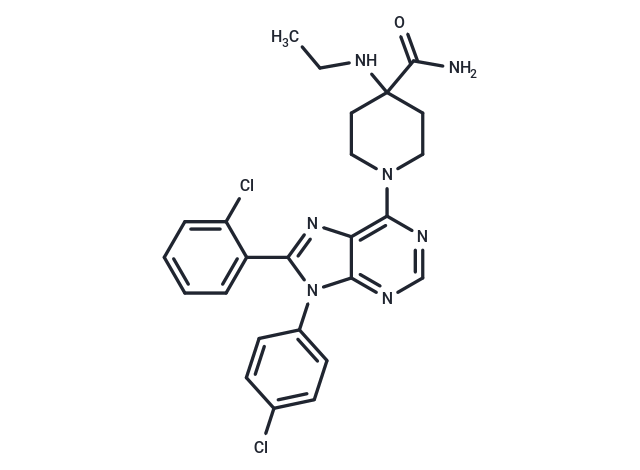Shopping Cart
- Remove All
 Your shopping cart is currently empty
Your shopping cart is currently empty

Otenabant (CP-945598) has been investigated for the treatment of Obesity.

| Pack Size | Price | Availability | Quantity |
|---|---|---|---|
| 2 mg | $41 | In Stock | |
| 5 mg | $67 | In Stock | |
| 10 mg | $96 | In Stock | |
| 25 mg | $183 | In Stock | |
| 50 mg | $327 | In Stock | |
| 100 mg | $488 | In Stock | |
| 1 mL x 10 mM (in DMSO) | $75 | In Stock |
| Description | Otenabant (CP-945598) has been investigated for the treatment of Obesity. |
| Targets&IC50 | CB:0.7 nM(Ki) |
| In vitro | Otenabant HCl has a low Ki affinity for human CB2 receptors of 7.6 μM[1]. Otenabant HCl inhibits CB1 receptor with moderate unbound microsomal clearance, low hERG affinity, and adequate CNS penetration[2]. |
| In vivo | Otenabant effectively enhances energy expenditure and promotes fat oxidation in rats, alongside reducing the respiratory quotient, indicative of a shift towards greater fat utilization. When administered orally at a dosage of 10 mg/kg, Otenabant results in a notable 9% weight reduction over 10 days in mice with diet-induced obesity, after adjusting for vehicle effects. Additionally, Hydrochloride (HCl) form of Otenabant counteracts behaviors induced by cannabinoid agonists—including altered locomotor activity, hypothermia, analgesia, and catalepsy—triggered by the synthetic CB1 receptor agonist CP-55940. Furthermore, in rodent models, Otenabant HCl demonstrates a dose-dependent appetite-suppressing effect and increases both energy expenditure and fat oxidation. |
| Alias | CP-945598 |
| Molecular Weight | 510.42 |
| Formula | C25H25Cl2N7O |
| Cas No. | 686344-29-6 |
| Smiles | CCNC1(CCN(CC1)c1ncnc2n(c(nc12)-c1ccccc1Cl)-c1ccc(Cl)cc1)C(N)=O |
| Relative Density. | 1.46 g/cm3 |
| Storage | Powder: -20°C for 3 years | In solvent: -80°C for 1 year | Shipping with blue ice. | ||||||||||||||||||||
| Solubility Information | DMSO: 10 mg/mL (19.59 mM), Sonication is recommended. | ||||||||||||||||||||
Solution Preparation Table | |||||||||||||||||||||
DMSO
| |||||||||||||||||||||

Copyright © 2015-2025 TargetMol Chemicals Inc. All Rights Reserved.